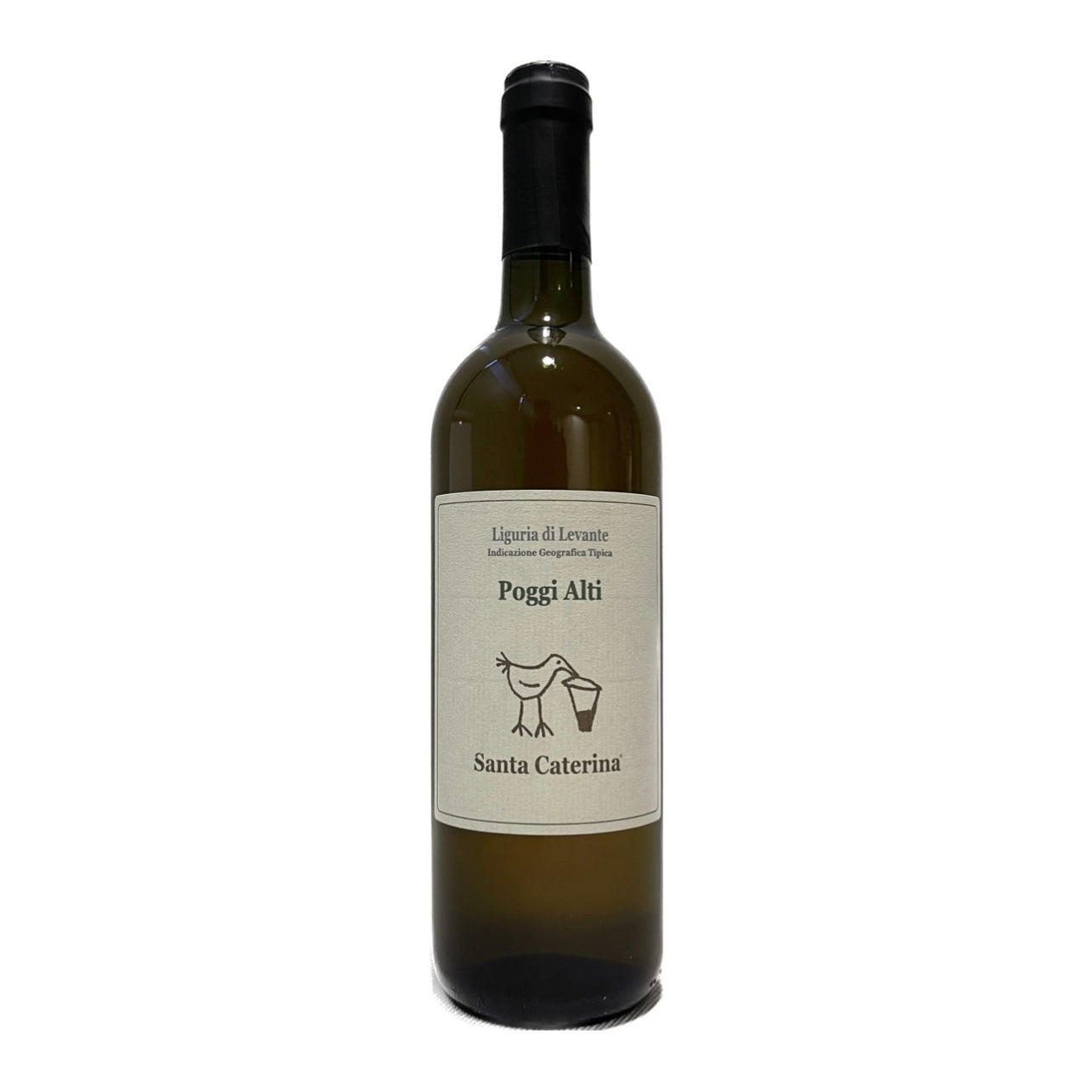SANTA CATERINA
LIGURIA DI LEVANTE IGT "POGGI ALTI" 2020 - SANTA CATERINA
LIGURIA DI LEVANTE IGT "POGGI ALTI" 2020 - SANTA CATERINA
Impossibile caricare la disponibilità di ritiro
Denominazione: Liguria di Levante IGT
Annata: 2020
Alcol: 13%
Regione: Liguria (Italia)
Formato: 0,75 l
Uvaggio: Vermentino 100%
Vino Biologico
Vigneto: località Santa Caterina in comune di Sarzana – Superficie 0,4 ettari
Potatura e resa per pianta: Potatura a Guyot. Resa media per pianta: 1,6 kg
Densità di impianto: circa 4.000 piante/ettaro
Suolo e sottosuolo: formazione collinare di origine alluvionale caratterizzata da argille rosse
Vinificazione: Diraspatura e contatto del mosto con le bucce di circa una settimana, in fusti di acciaio. Avvio spontaneo della fermentazione, quindi svinatura e pressatura delle vinacce. Affinamento in parte in acciaio e in parte in orci di grès e poi in bottiglia. Aggiunta di una piccola dose di solforosa prima dell’imbottigliamento
Solfiti: <40 mg/l totali
Quantità media: 3.500 bottiglie
Tipo di bottiglia e chiusura: bottiglia bordolese con tappo Nomacorc
L’azienda agricola Santa Caterina prende il nome dal suo podere principale, nel territorio del Comune di Sarzana, in Lunigiana. È costituita da circa 12 ettari, di cui 7 a vigna e uno a ulivi, risultato raggiunto attraverso progressivi reimpianti, con i quali si sono intensificate entrambe le colture.
Andrea Kihlgren (nella foto) conduce dal 1990 i tre poderi che fanno parte dell’azienda: Giuncàro (superficie pianeggiante di 0,7 ha, terreno alluvionale sabbioso-ciottoloso), Segalàra (declivio di 0,4 ettari, terreno alluvionale sabbioso argilloso), Ghiarétolo (terreno alluvionale sabbioso-ciottoloso di 1,5 ettari pianeggianti) e Santa Caterina (4,5 ettari alluvionale di argille rosse in collina). Qui hanno sede la cantina e gli altri edifici aziendali.
Nella conduzione agricola si cerca di preservare la fertilità del terreno mediante inerbimenti, semine per periodici rinnovamenti di erbe, apporti di sostanze compostate e altre pratiche volte alle stesse finalità. I trattamenti per contenere le malattie fungine delle piante sono a base di rame e zolfo. In maniera critica e viva, dall'inizio degli anni Duemila Kihlgren segue in campagna i princìpi guida e le pratiche dell’agricoltura biodinamica.
Oltre alla naturale priorità riservata al vitigno Vermentino, che sempre più nel tempo mostra la sua peculiare vocazione in questa terra, in vigna si lavora al recupero di alcune vecchie varietà autoctone (Merla, Albarola), attraverso una ricerca che non ha ancora finito di delinearsi.
Il lavoro in cantina è orientato al massimo rispetto dell’uva e del vino, senza uso di prodotti enologici, eccetto talvolta modeste dosi di anidride solforosa in fase di vinificazione e prima dell’imbottigliamento. Il risultato è una produzione di circa 25.000 bottiglie
Condividi


